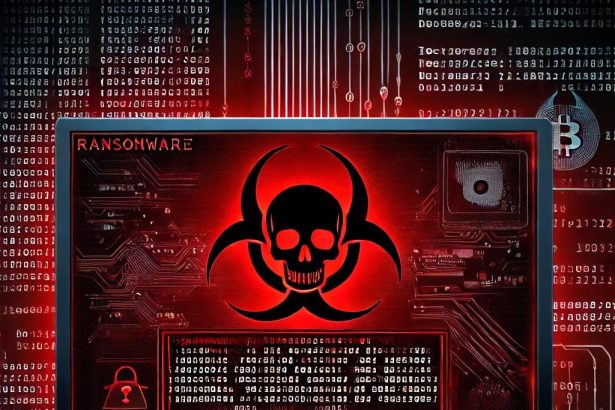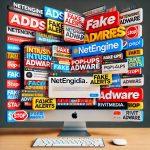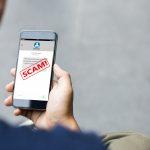Ransomware remains one of the most dangerous cyber threats, with attackers constantly refining their tactics to maximize damage. One such emerging threat is CmbLabs Ransomware, a malicious program designed to encrypt files and demand ransom payments for decryption. This ransomware primarily targets businesses and individuals, causing data loss, operational disruptions, and potential financial harm.
Threat Overview: CmbLabs Ransomware
| Threat Name | CmbLabs Ransomware |
|---|---|
| Category | Ransomware |
| File Extension | .cmblabs |
| Ransom Note Files | DECRYPT_INFO.hta, DECRYPT_INFO.txt |
| Primary Targets | Businesses, individuals |
| Distribution Methods | Phishing emails, drive-by downloads, compromised software, network exploits |
| Data Theft? | Yes, attackers may exfiltrate sensitive data |
| Ransom Demand? | Yes, users are asked to pay for decryption |
| Decryption Possible? | Not guaranteed, paying is discouraged |
Download SpyHunter Now & Scan Your Computer For Free!
Remove this and any other malicious threats to your system by scanning your computer with SpyHunter now! It’s FREE!
How CmbLabs Ransomware Operates
File Encryption Process
Once executed, CmbLabs Ransomware scans the system for valuable files and encrypts them using strong cryptographic algorithms. Encrypted files are marked with the .cmblabs extension, rendering them inaccessible.
Example:
document.pdf→document.pdf.cmblabsphoto.jpg→photo.jpg.cmblabs
Ransom Notes and Attacker Demands
After encryption, two ransom note files are created:
DECRYPT_INFO.hta– A popup ransom message.DECRYPT_INFO.txt– A text file with recovery instructions.
Ransom Note Text
Here is the full ransom message left by CmbLabs Ransomware:
ALL YOUR FILES WERE ENCRYPTED
!!! ALL YOUR DATA HAS BEEN COMPROMISED AND DOWNLOADED !!!
DO NOT CONTACT A DATA RECOVERY COMPANY - THEY WILL NOT BE ABLE TO HELP YOU.
THEY WILL CONTACT US IN ANY CASE AND WILL EARN THEIR COMMISSION FROM YOU.
This information has been downloaded:
- Employees personal data.
- Complete network map including credentials for local and remote services.
- Private financial information including: clients data, bills, budgets, annual reports, bank statements.
IMPORTANT:
- DO NOT MODIFY ENCRYPTED FILES YOURSELF
- DO NOT USE THIRD PARTY SOFTWARE TO RESTORE YOUR DATA
- YOU MAY DAMAGE YOUR FILES, RESULTING IN PERMANENT DATA LOSS
HOW TO CONTACT US:\n1. Download and install Tor Browser from: hxxps://torproject.org/\n2. Use your personal link: -The message warns victims against using recovery tools and directs them to use Tor Browser to contact the attackers.
Data Theft and Extortion Risks
While the ransom note does not explicitly threaten data leaks, CmbLabs Ransomware is believed to exfiltrate sensitive data before encryption. This stolen data may include:
- Network credentials
- Financial records
- Employee and customer information
Attackers might sell this data on the dark web or demand additional payments to prevent exposure.
How CmbLabs Ransomware Spreads
Understanding how CmbLabs Ransomware infects systems can help users prevent attacks. Common distribution methods include:
- Phishing Emails
- Malicious attachments (Word, PDF, ZIP, EXE files)
- Fraudulent links leading to infected downloads
- Compromised Software & Websites
- Fake software updates
- Pirated software infected with malware
- Exploiting System Vulnerabilities
- Unpatched Windows and outdated software
- Weak Remote Desktop Protocol (RDP) access
- Drive-by Downloads & Malvertising: Harmful ads that trigger automatic ransomware downloads
- USB Devices & Network Spreading: Ransomware can spread through shared networks and removable storage
How to Remove CmbLabs Ransomware
IMPORTANT: Do NOT pay the ransom! Paying cybercriminals does not guarantee data recovery and encourages further attacks.
Download SpyHunter Now & Scan Your Computer For Free!
Remove this and any other malicious threats to your system by scanning your computer with SpyHunter now! It's FREE!
Step 1: Disconnect from the Network
- Unplug Ethernet cables
- Turn off Wi-Fi
- Prevent ransomware from spreading to other devices.
Step 2: Boot into Safe Mode
- Restart your computer
- Press F8 (or Shift + Restart for Windows 10/11)
- Select Safe Mode with Networking
Step 3: Identify and Terminate Malicious Processes
- Press
Ctrl + Shift + Escto open Task Manager - Look for suspicious processes (e.g., unknown EXE files running)
- Right-click and select End Task
Step 4: Delete Ransomware Files
- Open File Explorer
- Navigate to:
C:\Users\[YourName]\AppData\Local\TempC:\Windows\TempC:\ProgramData
- Delete unknown EXE files
Step 5: Remove Malicious Registry Entries
- Press Win + R, type
regedit, and hit Enter - Navigate to:
HKEY_CURRENT_USER\Software\HKEY_LOCAL_MACHINE\Software\
- Look for unknown or suspicious registry keys and delete them.
Step 6: Run a Malware Scanner
- Use SpyHunter or another reputable anti-malware tool to remove hidden ransomware components.
Step 7: Restore Files from Backups
- If you have backups, restore your files instead of paying the ransom.
How to Prevent Future Ransomware Infections
Keep Regular Backups
- Use external hard drives and cloud storage
- Enable automatic backup scheduling
Install Security Updates
- Keep Windows, antivirus, and software updated
- Patch security vulnerabilities
Enable Multi-Factor Authentication (MFA)
- Protect accounts with extra login verification
Use Strong Antivirus & Anti-Malware
- Install SpyHunter or another real-time threat scanner
Be Wary of Phishing Attacks
- Avoid clicking unknown links
- Scan email attachments before opening
Restrict Administrator Privileges
- Limit admin access to prevent unauthorized changes
Disable Macros in Microsoft Office
- Attackers often use malicious macros to infect systems
Final Thoughts
CmbLabs Ransomware is a dangerous malware variant capable of encrypting files and stealing sensitive data. The best defense against ransomware attacks is prevention, including regular backups, security updates, and cautious online behavior.
If your system is already infected, follow the removal guide above to eliminate the ransomware and restore your files. Avoid paying the ransom, as cybercriminals may not return your data even after receiving payment.
For advanced protection, consider using SpyHunter to detect and remove ransomware threats automatically.
Download SpyHunter Now & Scan Your Computer For Free!
Remove this and any other malicious threats to your system by scanning your computer with SpyHunter now! It's FREE!




